A desert environment might be harsh but it’s a rich ecosystem that houses various kinds of living things, including plants.
Various plants live in the desert and thrive quite well despite the harsh temperature and water scarcity. Many desert plants grow in hot and arid regions using survival and adaptation strategies.
So if you want to know other desert plants aside from cactus and rocks in your landscape, explore some of the various desert plants and adaptation strategies listed in this piece.
Different Plants that Live in the Desert
1. Wildflowers
Wildflowers abound in desert environments and dry gardens. Some of the most common desert wildflowers are:
-
Mojave Aster
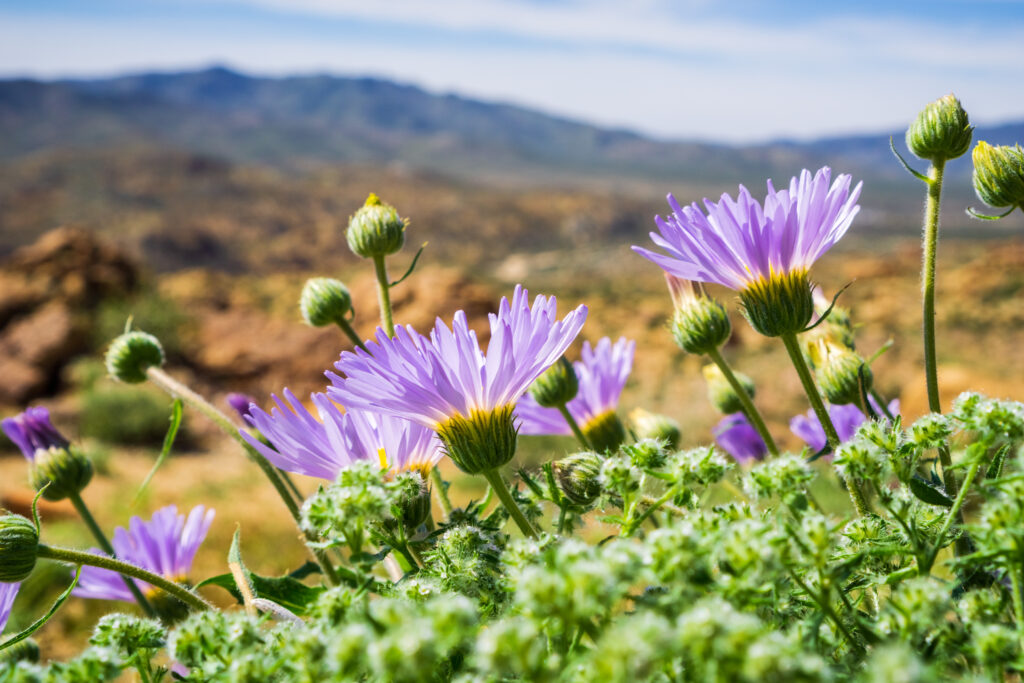
Mojave asters, members of the sunflower family, have little purple flowers with a bright yellow center and long grayish-green stems. This plant thrives in sandy or rocky valleys that range in elevation from 2,000 to 5,500 feet.
-
Sand Verbena
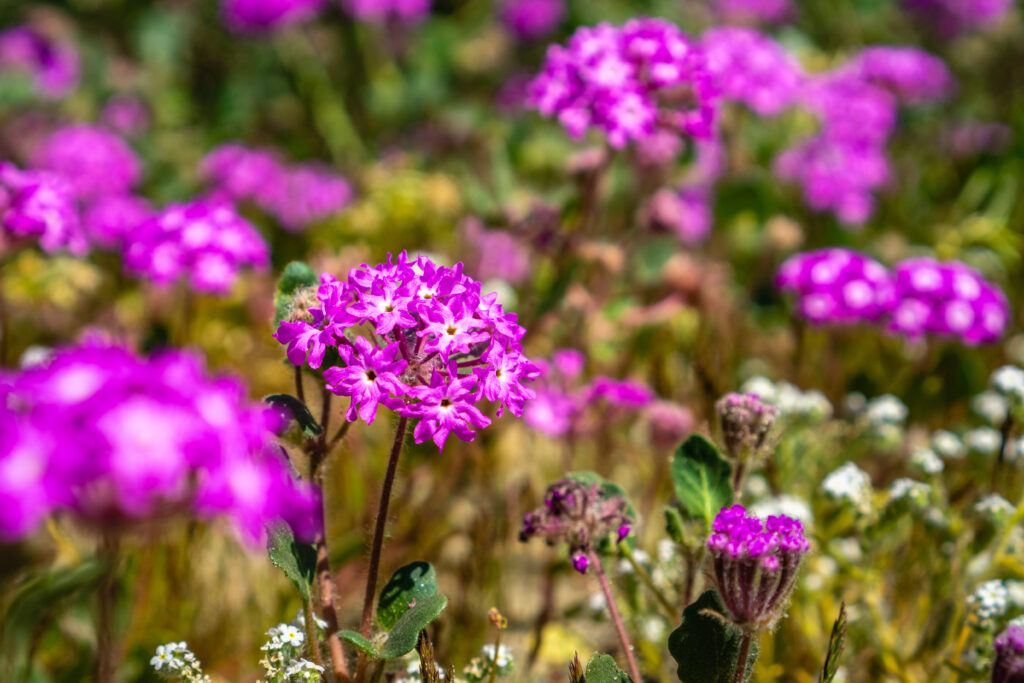
Sand verbena is a spreading vine that grows at elevations less than 1500 feet. Sand verbena, which is most commonly found in dunes and along the sides of roads, produces a brilliant pink or fuchsia-colored trumpet-shaped flower.
-
Dune Evening Primrose
This beautiful flower, sometimes known as desert primrose, can be found creeping in open and sandy desert environments among dunes at elevations below 3500 feet.
It can be found in the Mojave, Sonoran and Great Basin deserts of California, Arizona, Nevada and Utah.
The thin and hairy gray-to-green leaves grow to approximately 4 inches and form a basal rosette. Beautiful, fragrant white flowers with a golden center bloom from January to May, opening in the evening and closing in the morning.
-
Arizona Poppy
This flower, also known as the summer poppy or orange caltrop, blooms between July and October and mimics the orange flowers of the California poppy.
It has an annual taproot that can grow to 9 inches and lateral roots that can reach 8 inches. The leaves and stem are covered in fine hairs and the bright orange blooms with a small red patch in the middle bloom for only one day before falling off.
This beautiful wildflower can be found throughout the Sonoran and Chihuahuan deserts.
2. Cactus and Succulents
Cacti and succulents are another set of plants that live in the desert and make up the vast bulk of the flora found in desert regions.
Their exquisite shapes, flowers, berries, soft leather-like leaves and spines depict a plant species adapted to survive in a harsh environment.
-
Yucca
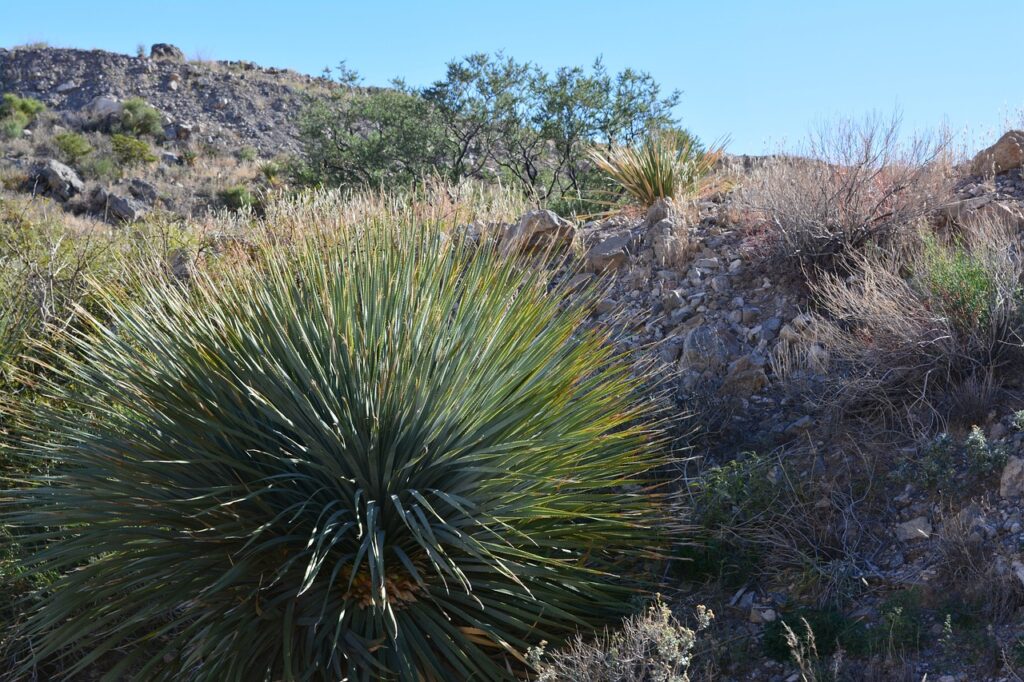
Yucca is a popular desert shrub and New Mexico’s official flower. Yucca has long, slender leaves that are pointed at the ends.
The stout central stem bears a cluster of white, bell-shaped blooms. Yucca is endemic to the southwestern United States and northern Mexico, and Pueblo Indian tribes cultivate it for its fruit.
There are various species of yucca plants, including yucca filamentosa (also known as Adam’s needle), which has a clump of leaves about 30 inches tall and a huge flower stalk in the center.
-
Domestic Agaves
Agaves are distinguished by their massive flower panicles, as well as their unique shapes, colors, and textures.
While you may be familiar with the blue agave (native to Mexico), from which agave nectar is obtained, there are at least 18 identified agave varieties found in seven of the 50 states.
Arizona has the largest diversity of this plant category, with 12 species. Most agaves produce rosettes comprised of succulent, stiff, and hard leaves with marginal teeth and a sharp terminal spine.
-
Saguaro Cactus
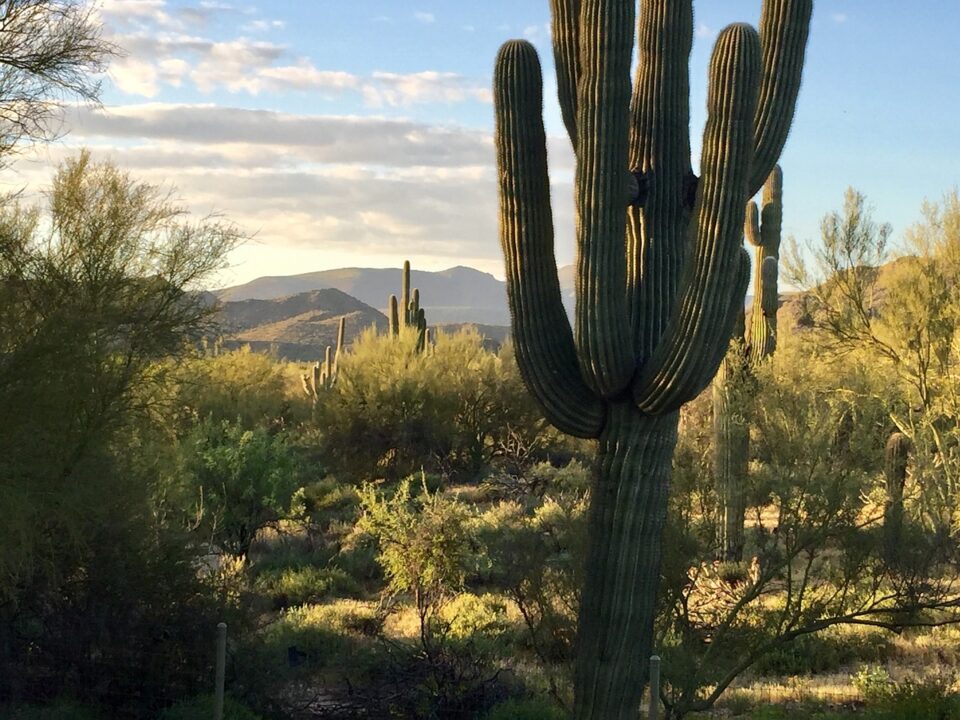
The Saguaro cactus is one of the most common desert plants that people associate with. This delicious succulent is Arizona’s state flower and it only grows about one inch per year.
When in bloom, the Saguaro cactus produces huge white flowers with golden centers along the tops of its branches. The blossoms open at night and close when the sun heats up in the early afternoon.
-
Prickly Pear
The prickly pear is another prominent cactus. The prickly pear skin is coated in spines known as glochids.
Some people mistake the big flat pads for leaves, however, the pads are little branches. This cactus is easily identifiable because of its prickly pear blooms in the spring and huge yellow flowers.
When mature, the prickly pear’s red fruit is picked, and the juice is utilized in fruit smoothies and health beverages.
-
Barrel Cactus
The barrel cactus, also known as the compass cactus, was utilized by Native Americans for navigation.
These cacti can be found in the southwest region of North America, including the Sonoran, Mojave and Chihuahua deserts.
Barrel cactus grows in desert washes, gravel-covered slopes and behind desert canyon walls. These globe-shaped cacti grow slowly and can last up to a hundred years.
They have a green color with reddish-orange spines and bright red, orange, or yellow blooms that bloom from July to September.
3. Shrubs and Trees
Desert vegetation consists of a variety of shrubs and trees, including:
-
Juniper
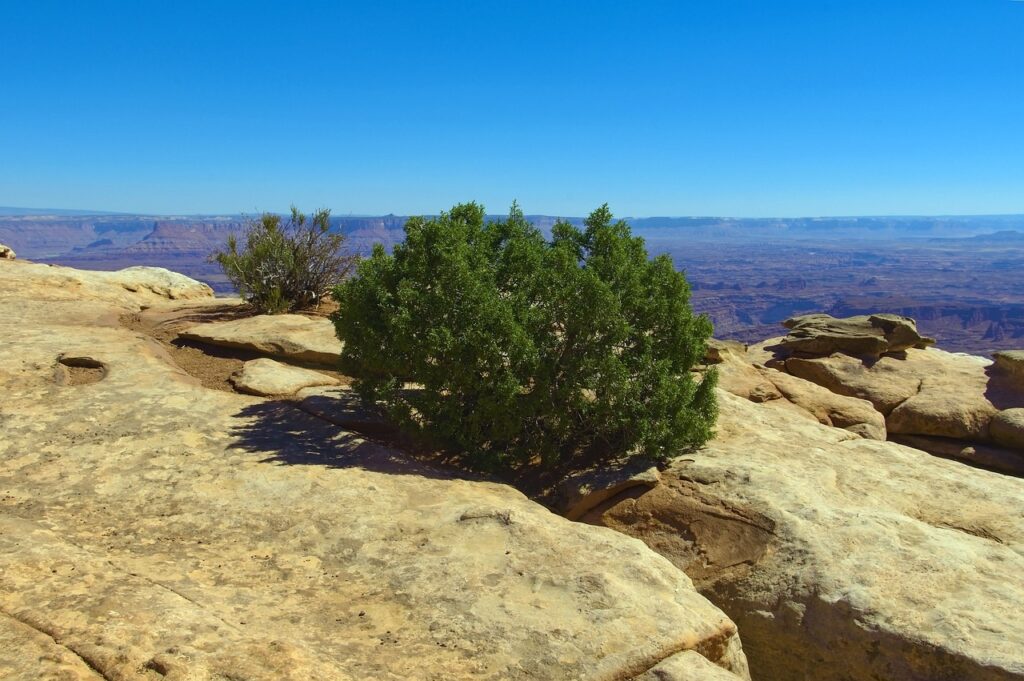
Juniper is the most prevalent desert tree in the Southwest United States. Juniper grows at higher elevations and is commonly seen on mesas.
They typically grow to be about 40 feet tall and thrive in full sunlight. Junipers will develop slowly and provide fewer berries if they are planted too close together.
-
Brittlebush
This medium-sized spherical shrub grows in bunches over the Sonoran and Mohave deserts. It is also found in Southern California’s interior valleys as well as coastal chaparral.
Between May and June, the plant produces a profusion of yellow blossoms. The brittle branches contain a highly fragrant resin.
-
Pinyon Pine
The Pinyon pine is another tree that grows in the deserts of the Southwest United States. The Pinyon pine is a relatively modest tree that grows to approximately 30 feet tall and yields a tasty Pinyon nut.
The nut, commonly known as the pine nut, is a key ingredient in pesto, a famous pasta sauce.
-
Desert Willow
Desert willows are huge shrubs that reach 20 feet tall and have slender branches. The plant produces pinkish-purple flowers that resemble orchids.
Though most desert plants can tolerate extremely dry conditions, the desert willow needs a moderate amount of water to flourish. The plant grows alongside creeks, streams and drainage ditches.
-
Cliffrose
This plant belongs to the rose family and is often found at elevations ranging from 3,500 to 8,000 feet in the Southwest, Rockies, and Great Basin regions of Mexico.
Bees and butterflies are drawn to this sweet-smelling shrub, which produces fragrant whitish flowers. Cliffrose shrubs can grow to be up to 20 feet tall and bloom from mid-spring to summer.
-
Joshua Tree
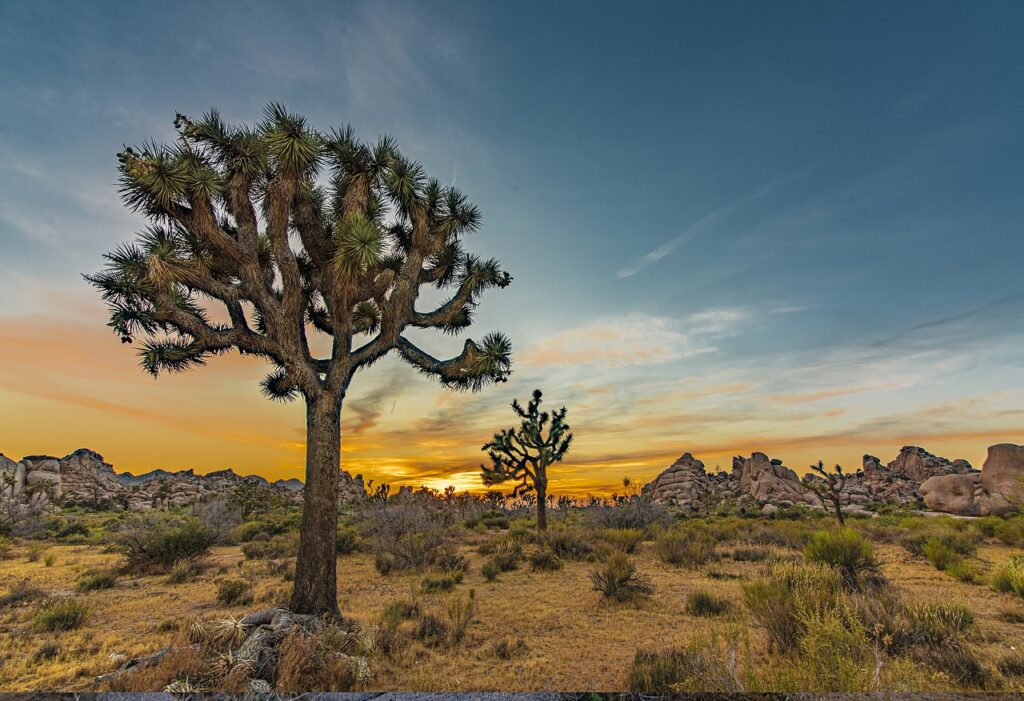
This plant is the largest in the yucca family, reaching over twenty feet tall, and is found in the Mojave Desert, Nevada, Arizona and Utah at elevations ranging from 2,000 to 6,000 feet.
The Joshua tree, which is commonly seen in groves, produces bell-shaped blossoms throughout the spring.
Adaptations of Desert Plants
Desert plants have evolved numerous adaptations to thrive in their harsh habitat. These adaptations enable desert plants to live in some of the harshest settings on Earth. Here are some of such adaptations:
-
Water Storage
Many desert plants have evolved unique techniques for successfully storing water. These adaptations allow desert plants to withstand extended periods of drought.
Cacti are some of the most well-known water-storing desert plants. Succulent plants, such as agaves and aloes are another example of water-storing adaptations.
These plants store water in the fleshy leaves or rosettes. Other plants can store water in their stems, trunks or leaf structures.
-
Reduced Leaves
Some desert plants have decreased leaves. Many cacti, for example, have cylindrical stems with tiny leaves (or none at all). Without leaves, these plants rely on their stems to perform photosynthesis.
Having fewer (or no) leaves reduces the surface area exposed to sunlight, which helps to reduce water loss during the day.
-
Hairy or spiny surfaces
Many plants that live in the desert are notable for having hairy or spiky textures. Plants having such adaptations include cacti, agaves, and some grasses. Also, hair and spines are effective at deterring herbivores from eating the plant.
These structures also obstruct the passage of air near the plant’s surface, slowing the rate of water loss. The hairs and spines provide shade for the plant’s surface, shielding it from the intense desert heat.
-
Extreme Root Adaptations
Desert plants use a variety of root adaptations to obtain limited water resources. Some species, such as Mesquite and Shepherd’s trees, form extremely deep taproots.
In some situations, these roots can reach hundreds of feet deep. The plant’s extensive roots allow it to reach groundwater supplies.
-
Special Surfaces or Coatings
Many desert plants have a waxy covering that helps to prevent water loss. The waxy coating serves as a waterproof barrier, inhibiting evaporation.
Other desert plants create unique compounds that coat their leaves. Creosote bush is one of these plants.
These unique coatings help to prevent water loss. They also protect from desert herbivores and severe heat.
-
Dormancy
Some desert plants lie dormant during periods of drought or other harsh weather. Plants go dormant, which slows or stops their growth and other processes for a while. Plants can conserve resources by going into dormancy until the conditions improve.
-
Rapid Growth Cycles
Some desert poppies and other wildflowers exhibit this behavior. Following rain, these plants sprout, blossom and set seed quickly, all before the soil dries. The effect can be striking, with barren places bursting into blossom following rains.
Conclusion
Plants that live in the desert are remarkable and they have adapted to the conditions of the desert environment. These plants allow you to enjoy the beauty of the desert through their unique flora and characteristics.


